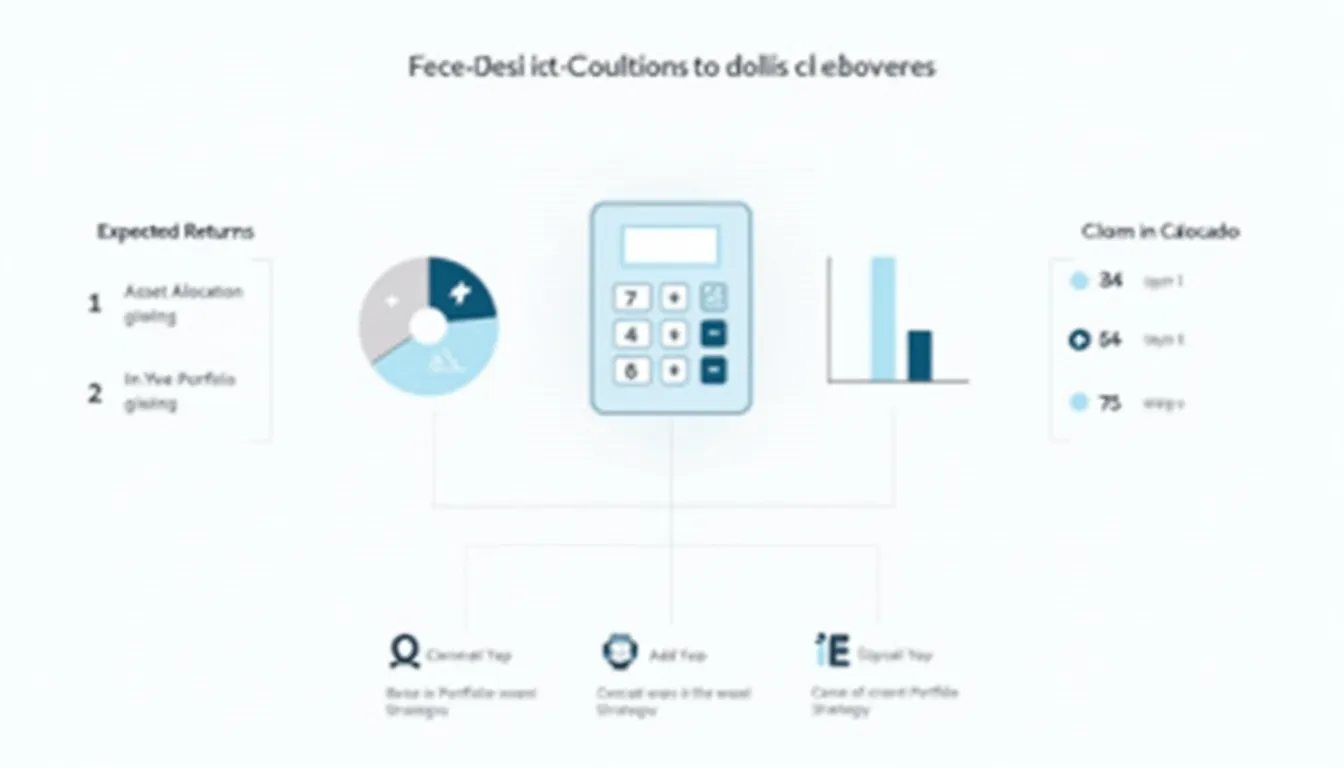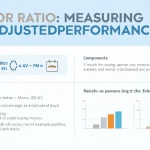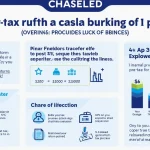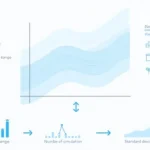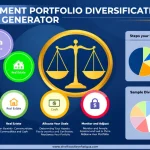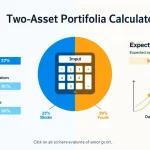Expected Return of Portfolio Calculator
Is this tool helpful?
Welcome to our Expected Return of Portfolio Calculator, a powerful tool designed to help investors make informed decisions about their investment portfolios. This calculator enables you to estimate the potential returns of your diversified investment portfolio, taking into account multiple investments and their respective rates of return.
How to Use the Expected Return of Portfolio Calculator
Using our calculator is straightforward and intuitive. Follow these steps to get an accurate estimate of your portfolio’s expected return:
- Enter the Number of Investments: Start by inputting the total number of investments in your portfolio. This could range from a few to several dozen, depending on your diversification strategy.
- Input Investment Details: For each investment, you’ll need to provide two key pieces of information:
- Investment Amount (in USD): The total amount you’ve invested in each asset.
- Rate of Return (%): The expected annual return rate for each investment.
- Calculate: Once you’ve entered all the required information, click the “Calculate” button to generate your results.
- Review Results: The calculator will display the expected return of your entire portfolio as a percentage.
Understanding the Expected Return of Portfolio
The expected return of a portfolio is a crucial metric for investors, as it provides an estimate of the potential gains from a diversified set of investments. This calculation takes into account both the amount invested in each asset and its individual expected rate of return.
The Mathematical Formula
The expected return of a portfolio is calculated using the following formula:
$$E(R_p) = \sum_{i=1}^{n} w_i \cdot r_i$$Where:
- E(Rp) is the expected return of the portfolio
- wi is the weight of investment i in the portfolio
- ri is the expected return of investment i
- n is the number of investments in the portfolio
Benefits of Using the Expected Return of Portfolio Calculator
Our Expected Return of Portfolio Calculator offers numerous advantages for investors of all levels:
- Informed Decision Making: By providing a clear estimate of your portfolio’s potential return, this calculator empowers you to make more informed investment decisions.
- Risk Assessment: Understanding your expected return helps you assess whether the potential gains justify the risks associated with your investment strategy.
- Portfolio Optimization: Use the calculator to experiment with different investment allocations and see how they affect your overall expected return.
- Goal Setting: Align your investment strategy with your financial goals by estimating the returns needed to achieve them.
- Diversification Analysis: Evaluate the impact of diversification on your portfolio’s expected return.
- Time-Saving: Quickly calculate complex portfolio returns without the need for manual calculations or spreadsheets.
Addressing User Needs and Solving Investment Challenges
The Expected Return of Portfolio Calculator addresses several key challenges faced by investors:
1. Simplifying Complex Calculations
Calculating the expected return of a diversified portfolio can be a complex and time-consuming task, especially when dealing with multiple investments. Our calculator automates this process, allowing you to obtain accurate results in seconds.
2. Balancing Risk and Return
By providing a clear picture of your portfolio’s expected return, this tool helps you balance risk and potential rewards. You can adjust your investment allocations to find the optimal balance that aligns with your risk tolerance and financial goals.
3. Evaluating Investment Opportunities
When considering new investment opportunities, you can use this calculator to see how they might impact your overall portfolio return. This allows you to make more informed decisions about whether to include new investments in your portfolio.
4. Long-Term Financial Planning
Understanding your portfolio’s expected return is crucial for long-term financial planning. This calculator helps you project potential future wealth, allowing you to plan for retirement, major purchases, or other financial milestones.
5. Educational Tool for New Investors
For those new to investing, this calculator serves as an educational tool, demonstrating how different investments and allocation strategies can impact overall returns. It encourages a deeper understanding of portfolio management principles.
Practical Applications and Use Cases
To illustrate the practical value of the Expected Return of Portfolio Calculator, let’s explore some real-world scenarios:
Example 1: Diversified Stock Portfolio
Imagine an investor with a portfolio consisting of three stocks:
- Stock A: $10,000 invested, expected return of 7%
- Stock B: $15,000 invested, expected return of 5%
- Stock C: $5,000 invested, expected return of 10%
Using our calculator, the investor would find that the expected return of this portfolio is approximately 6.33%. This information can help them decide whether this allocation aligns with their investment goals or if adjustments are needed.
Example 2: Balanced Portfolio with Stocks and Bonds
Consider a more conservative investor with a balanced portfolio:
- Stock Index Fund: $50,000 invested, expected return of 8%
- Bond Fund: $40,000 invested, expected return of 3%
- Real Estate Investment Trust (REIT): $10,000 invested, expected return of 6%
The Expected Return of Portfolio Calculator would show an overall expected return of about 5.9%. This allows the investor to assess whether this balanced approach provides the right mix of growth potential and stability for their needs.
Example 3: Comparing Portfolio Strategies
An investor might use the calculator to compare different portfolio strategies. For instance:
Strategy A:
- Large-Cap Stock Fund: $30,000, expected return 7%
- Small-Cap Stock Fund: $20,000, expected return 9%
- International Stock Fund: $25,000, expected return 8%
- Bond Fund: $25,000, expected return 3%
Strategy B:
- Dividend Stock Fund: $40,000, expected return 6%
- Growth Stock Fund: $30,000, expected return 10%
- Corporate Bond Fund: $30,000, expected return 4%
By using the calculator for both strategies, the investor can compare their expected returns and make a more informed decision about which approach better suits their investment goals.
Frequently Asked Questions (FAQ)
1. What is the expected return of a portfolio?
The expected return of a portfolio is an estimate of the potential gain or loss on an investment portfolio over a specific period, usually expressed as a percentage. It takes into account the expected returns of individual investments and their respective weights in the portfolio.
2. How accurate is the Expected Return of Portfolio Calculator?
While our calculator provides a reliable estimate based on the information you input, it’s important to remember that expected returns are projections and not guarantees. Actual returns may vary due to market fluctuations, economic conditions, and other factors.
3. Can I use this calculator for any type of investment?
Yes, you can use this calculator for various types of investments, including stocks, bonds, mutual funds, ETFs, and real estate investments. As long as you can provide an expected return for each investment, the calculator can incorporate it into the overall portfolio calculation.
4. How often should I recalculate my portfolio’s expected return?
It’s a good practice to recalculate your portfolio’s expected return periodically, especially when you make significant changes to your investments or when market conditions shift. Many investors choose to do this quarterly or annually as part of their regular portfolio review.
5. What if I don’t know the expected return for an investment?
If you’re unsure about the expected return for a specific investment, you can use historical average returns for similar assets as a starting point. However, it’s important to adjust these based on current market conditions and your own research or consult with a financial advisor for more accurate estimates.
6. How does the expected return relate to risk?
Generally, investments with higher expected returns also carry higher risks. While this calculator focuses on returns, it’s crucial to consider the risk level of your portfolio as well. A well-balanced portfolio should align with your risk tolerance and investment goals.
7. Can this calculator help me with asset allocation?
While the primary purpose of this calculator is to estimate returns, it can indirectly assist with asset allocation. By experimenting with different investment amounts and their expected returns, you can see how various allocation strategies might affect your overall portfolio performance.
8. Is the expected return the same as the actual return?
No, the expected return is a projection based on historical data and current market expectations. The actual return may differ due to various factors, including market performance, economic conditions, and unforeseen events.
9. How does inflation affect the expected return?
The expected return calculated by this tool is typically a nominal return, which doesn’t account for inflation. To get a real return (adjusted for inflation), you would need to subtract the expected inflation rate from the nominal return.
10. Can I use this calculator for retirement planning?
Yes, this calculator can be a valuable tool for retirement planning. By estimating your portfolio’s expected return, you can project potential future wealth and assess whether your current investment strategy aligns with your retirement goals.
Please note that we cannot guarantee that the webtool or results from our webtool are always correct, complete, or reliable. Our content and tools might have mistakes, biases, or inconsistencies.
Conclusion: Empower Your Investment Strategy
The Expected Return of Portfolio Calculator is an invaluable tool for investors seeking to optimize their investment strategies and make more informed financial decisions. By providing a clear estimate of your portfolio’s potential performance, this calculator empowers you to:
- Assess the effectiveness of your current investment allocation
- Compare different investment strategies
- Align your portfolio with your financial goals and risk tolerance
- Make data-driven decisions about new investment opportunities
- Plan for long-term financial objectives with greater confidence
Remember, while expected returns are a crucial metric, they should be considered alongside other factors such as risk, diversification, and your personal financial situation. Use this calculator as part of a comprehensive approach to portfolio management, and don’t hesitate to consult with a financial advisor for personalized guidance.
Take control of your investment future today. Use our Expected Return of Portfolio Calculator to gain valuable insights into your portfolio’s potential and take the next step towards achieving your financial goals.
Important Disclaimer
The calculations, results, and content provided by our tools are not guaranteed to be accurate, complete, or reliable. Users are responsible for verifying and interpreting the results. Our content and tools may contain errors, biases, or inconsistencies. We reserve the right to save inputs and outputs from our tools for the purposes of error debugging, bias identification, and performance improvement. External companies providing AI models used in our tools may also save and process data in accordance with their own policies. By using our tools, you consent to this data collection and processing. We reserve the right to limit the usage of our tools based on current usability factors. By using our tools, you acknowledge that you have read, understood, and agreed to this disclaimer. You accept the inherent risks and limitations associated with the use of our tools and services.
